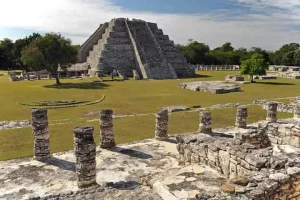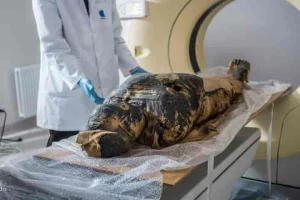Dinosaurs continue to surprise us as has the nearly complete fossilised skeleton one which sports a tail that is club like as per an article in smithsonianmag.com. This fossil was found in Chile’s arid Patagonia region.
The tail of this skeleton is unique as it has seven pairs of flat body scales that are blade-like, all of which are fused together. This as per the National Geographic report by Michael Greshko has not been seen before in any other dinosaur.
The researchers after studying it extensively stated that it belonged to a new type of armoured dinosaur called Stegouros elengassen. It is ankylosaur species that was found on the Earth around 72 to 75 million years ago.
According to a study in Nature, the characteristics of the remains and its distinctive tail, suggest an early evolutionary split in ankylosaurs.
Also read: Volcanic Eruptions Helped Dinosaurs Evolve And Dominate The Earth For 166 Million Years
Herbivorous by nature, ankylosaurs were found in the Late Cretaceous period and their attributes included distinct bone plates peppering their bodies and heads. Called osteoderms it was for defence against carnivorous dinosaurs, Chen Ly stated in New Scientist.
Even though the diverse species of ankylosaurs have barbed skulls and club-like tails, the scientists had never seen a tail like the one S. elengassen had, while it also had less body armour as well as slender limbs as compared to other species.
This particular species discovered has characteristics of both ankylosaurs and stegosaurs. Walking on all fours, it was less than two feet in height, and measured not even seven feet from its head to tail, reported NG.
Highlighting its other features, New Scientist reported that the S. elengassen’s pelvis looked identical as that of a stegosaur but the skeleton’s jawbones did indeed confirm that it belonged to an ankylosaur.
Author of the study, Alexander Vargas, who is a palaeontologist at the University of Chile, told New Scientist: “This is our first good look at a South American armoured dinosaur, and it is not like any armoured dinosaur you’ve ever seen before. It has a tail weapon that is a new category – all we knew [before] was tail spikes and tail clubs, now we have this weird frond-like thing.”
The Ankylosaurus fossils from supercontinent Pangea’s northern area have been documented and researched but few of these have been found in the Southern Hemisphere. Those found are possibly the earliest species of the group and these may typify the early evolutionary branch of the armoured dinosaurs from the mid-Jurassic period.
The northern hemisphere ankylosaurs from early period did not have tail clubs, and the later ones had tails that were made of stiffened vertebrate which took the shape of a blunt hammer said Asher Albein in New York Times. The spiked and fused tail of S. elengassen may have been caged in razor-shaped sheets of keratin said State palaeontologist at the Utah Geological Survey, James Kirkland. Kirkland was not part of the study.
Also read: The strange case of a dinosaur species which reduced in size and fed on termites!
The reason why the split took place, researchers feel, was because Laurasia and Gondwana drifted apart in the late Jurassic era. They also suggested that due to this division, an entire family of ankylosaurs may still remain to be discovered in what was Gondwana then.
Talking about the study, geoscience expert at James Cook University Jelle Wiersma told New Scientist: "We don’t quite understand what the evolutionary driving forces are for these ankylosaurians to remain morphologically more ancestral compared to the ankylosaurian dinosaurs from the northern hemisphere. But this study certainly highlights that there is still a lot to learn about this particular group of dinosaurs.” Wiersma was not involved in the present study.
The S. elengassen fossilized remains were presented to the world at the Central House of the University of Chile on December 1.




















